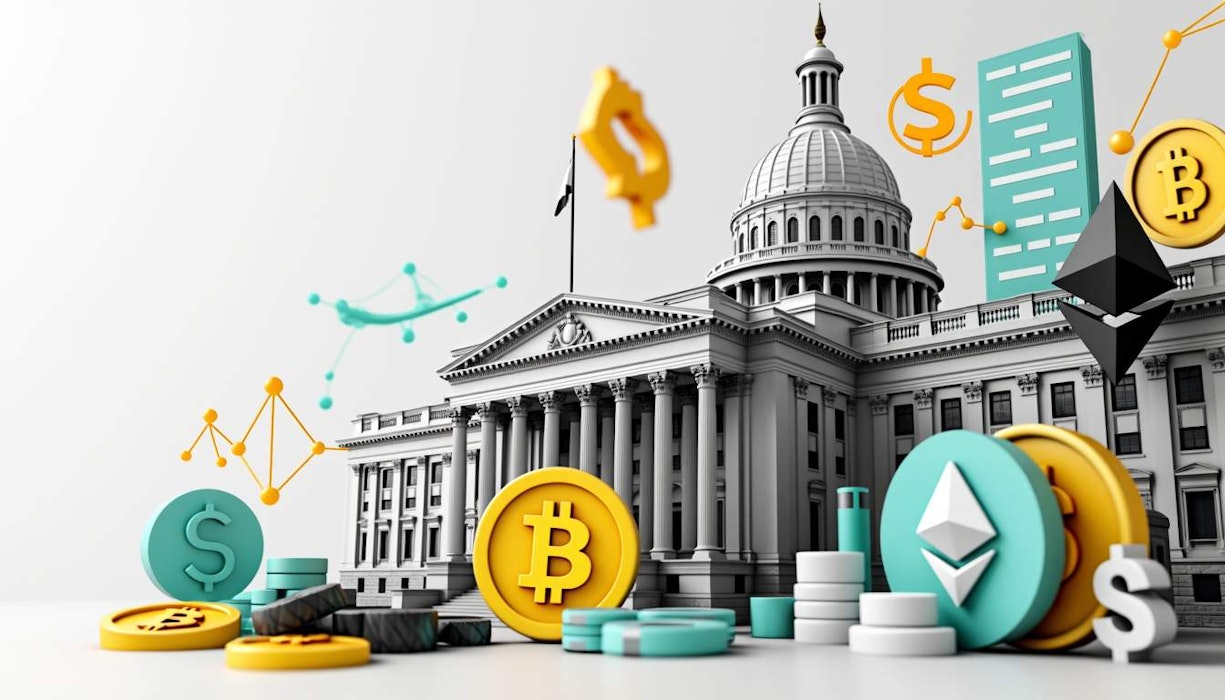Imagine a future where Bitcoin, the digital currency we’ve been hearing so much about, is not just a speculative asset but a strategic reserve capable of significantly reducing the U.S. national debt. According to VanEck, the asset management firm, it might be possible if Bitcoin continues on its current trajectory. They predict that by 2049, the value of Bitcoin could offset $42 trillion of U.S. debt. A bold claim, but let's break down how this might work—if it works at all.
The Vision of a Bitcoin Reserve
VanEck's report suggests that if the U.S. government accumulates Bitcoin in strategic reserves, it could reduce the national debt by 36% by 2050. This aligns with the vision of Senator Cynthia Lummis, who has been vocal about wanting the U.S. to buy 1 million Bitcoins within the next five years.
The crux of the argument is that Bitcoin could potentially increase by 25% annually, which would lead to a Bitcoin price of $42 trillion in 2049, thereby offsetting about 35% of the national debt. The math is shaky at best, given Bitcoin’s volatile history, but it’s an interesting proposition.
Bitcoin’s Global Potential
If this scenario plays out, Bitcoin wouldn’t just be a U.S. phenomenon. It could become a significant factor in global finance. The projection is for each Bitcoin to reach around $42.3 million by 2049, accounting for a staggering 18% of global financial assets. This is far more than its current share of 0.22%.
The power dynamics could shift. VanEck believes Bitcoin could replace the dollar in international trade, especially for countries looking to sidestep U.S. sanctions. Imagine if countries that have been sanctioned by the U.S. adopt Bitcoin instead of the dollar.
“It’s very possible bitcoin will be widely used as a settlement currency for global trade by countries who wanted to avoid the parabolic increase in USD sanctions that have been imposed,” VanEck’s Sigel stated.
Emerging economies would find Bitcoin's fixed supply and decentralized nature appealing. The question remains: is this a feasible future?
The Trade-offs and Challenges
While the idea of using Bitcoin for national debt management is alluring, it's worth questioning its practicality. Bitcoin is notoriously volatile, and its ability to provide consistent value as a reserve asset is unproven. The regulatory landscape is another hurdle. Would the government be able to hold such a volatile asset securely? And let's not forget the threat of cyber attacks on government-held wallets.
VanEck suggests a couple of things to jumpstart this initiative. First, the U.S. should stop selling Bitcoin from asset forfeiture reserves—currently holding around 198,100 Bitcoin. Why give it back, right? Second, they suggest adjusting the value of U.S. gold reserves to reflect current market prices, freeing up funds to buy Bitcoin.
However, skeptics like venture capitalist Nic Carter and economist Peter Schiff have voiced concerns. Would a Bitcoin reserve actually stabilize the dollar or create more instability? Schiff proposes the idea of USAcoin, a currency to truly serve as a national reserve asset.
Summary: Bitcoin's Uncertain Future
While VanEck's prediction is based on specific assumptions and scenarios, it's clear that the path to Bitcoin being a viable tool for debt management is fraught with uncertainty and complexity. The potential economic benefits are enticing, but the challenges surrounding volatility, value, and security loom large.
As the crypto landscape evolves, the idea of integrating Bitcoin into national financial strategies could reshape our economic future. But then again, maybe not.
